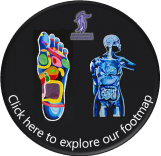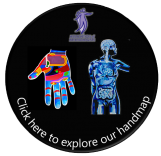History of Reflexology
Reflexology is an ancient therapy indicating that the benefits of working on the feet to encourage good health have been around for a long time. There is evidence that reflexology was used by the Egyptians in 2330BC. This is shown on a wall carving on an Egyptian Tomb of the physician to the king. It was also practiced in China and India. It wasn’t until 1913 that Dr.William Fitzgerald introduced it as ‘zone therapy’ to the West. In 1930 Eunice Ingham developed it further and it became known as ‘Reflexology’ as it is today.
Reflexology continues to evolve and develop in the 21st century and there are various types of reflexology practiced, including ART Advanced Reflexology techniques and RLD reflexology lymphatic drainage; a type of reflexology used to treat women who have had breast cancer and VRT Vertical reflexology therapy (a weight bearing reflexology applied to the outside of feet and hands). And these are just a few!
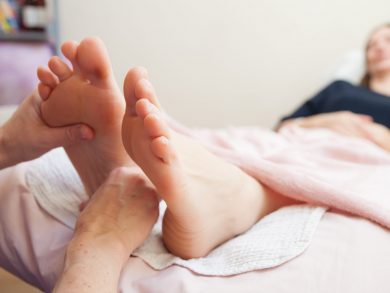
What happens during a reflexology treatment?
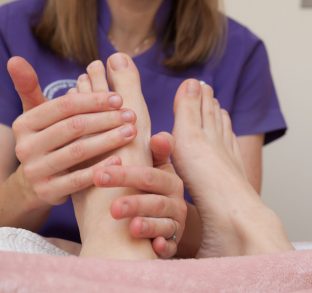
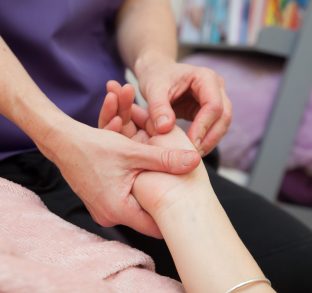
The first reflexology treatment starts with a full consultation including your medical history, health, lifestyle. This will establish your treatment needs and the reflexology session will be tailored to you. It is usually beneficial to have more than one session of reflexology to appreciate the lasting effects of the treatment, it is advised that at least 6 sessions would benefit a client.
The consultation will then be followed by a warmup foot massage and then the reflexology treatment where specific reflexes are worked on. During the whole treatment it is just your feet that are worked on so you remain fully clothed, you just need to remove your shoes and socks. Some parts of the foot may feel tender when pressed but this is nothing to worry about and its just the reflexology working. It is entirely your time, and I don’t mind if you wish to chat but I do advise you to try and relax during the treatment as it can be more beneficial. The session will end with a relaxing massage.
Hand Reflexology can be used if a client is not able to have their feet worked on for whatever reason. This can be discussed at the time of consultation.
A reflexology treatment typically lasts one hour.
Who can have
Reflexology?
I work with a variety of clients of all ages from babies, children, adults to the elderly.
Some clients I work with for a set period, e.g. once a week for 6 weeks to help with a condition such as sinusitis, or fertility, others I work with regularly on a monthly basis rather like a health MOT.
How will I feel after a reflexology treatment?
Most people feel relaxed and have a sense of well-being after a reflexology treatment.
There are no side effects but sometimes after a reflexology treatment there is a loosening of the body/mind processes which can sometimes mean you may feel tired, experience increased bowel movements or have a slight headache. These symptoms are usually short-lived and indicate that your body is working to heal itself. It is advisable to drink plenty of water after a reflexology treatment to help flush out all the toxins from the body. It is also advisable to try not to do anything too strenuous or stressful for the rest of the day to ensure the effects of the treatment are established.
What are the benefits of reflexology
Some of the benefits of reflexology include:
- It improves circulation
- It is great for relaxation
- It is fantastic for pain relief
- It balances the mind, body, and spirit
- It helps to stimulate the immune system and helps the body to heal itself
- It improves muscle tone
- It provides you with an opportunity to rest and slow down
Common conditions that reflexology may help
Reflexology does not claim to cure and should not be used as an alternative to seeking medical advice, but it may help with some of these common conditions:
Digestive disorders, IBS, constipation
Stress and anxiety
Fertility problems, sub-fertility, PMT
Menopause and Peri-menopause
Respiratory and breathing problems, asthma, sinusitis, hay fever
Bereavement
Back pain, sciatica, muscular pain
Lymphoedema
Pregnancy
Skin disorders, eczema
MS
Chronic Fatigue (ME)
These are just a few examples and there are many other conditions that reflexology may help with. It is also very effective for maintaining good health.
©2022 Hazel Powell
powered by WebHealer
